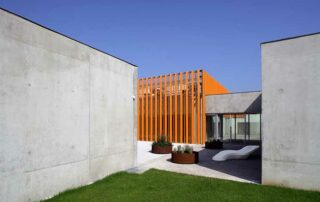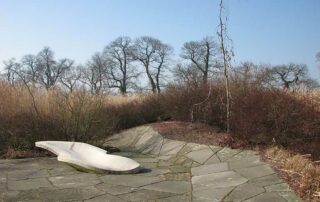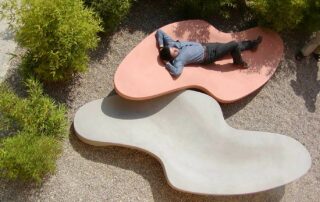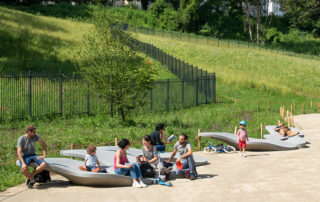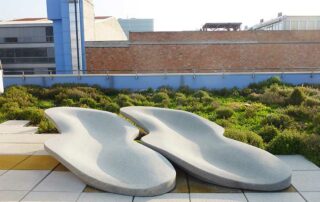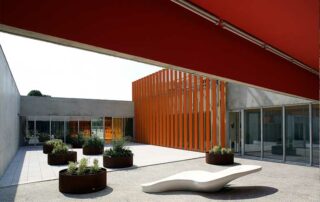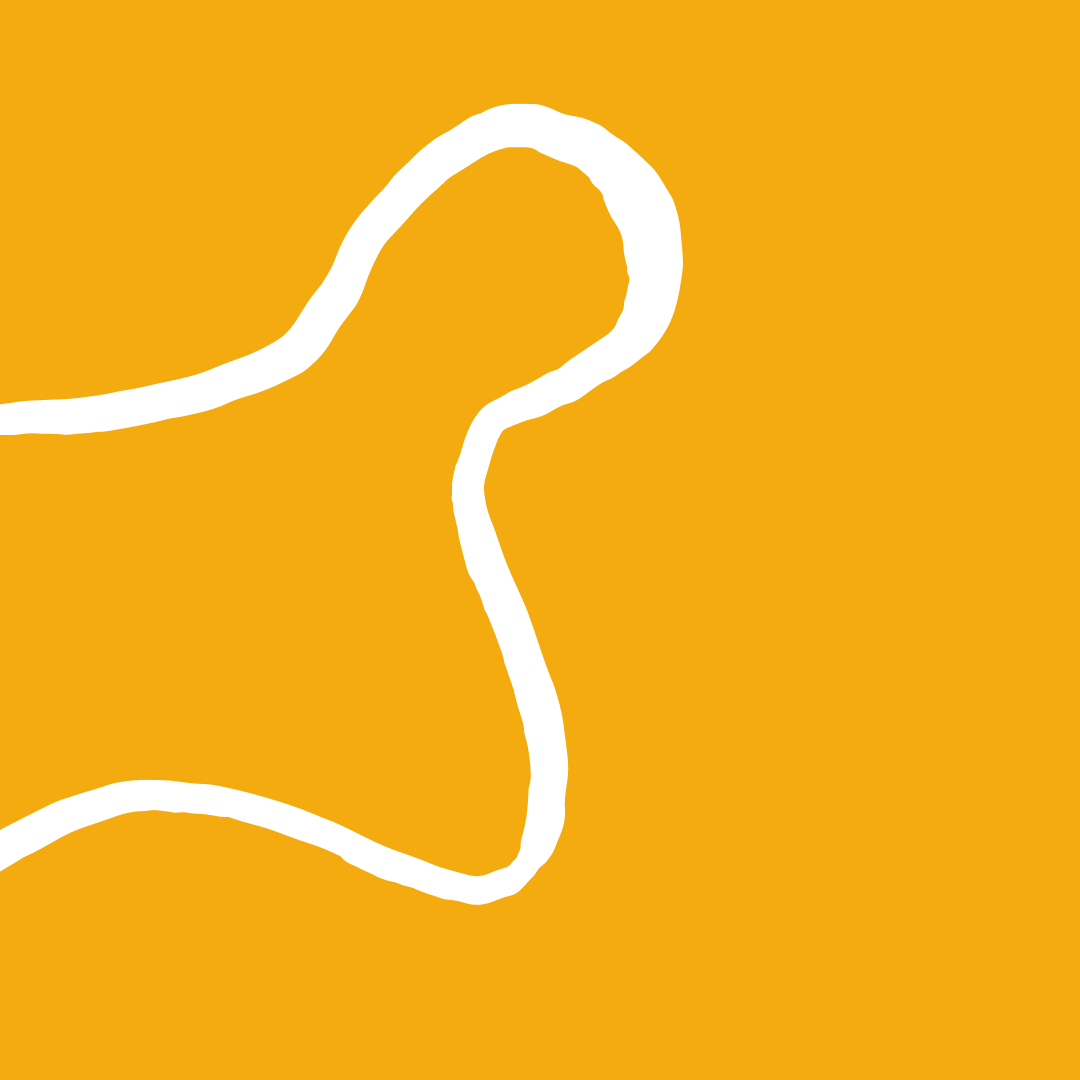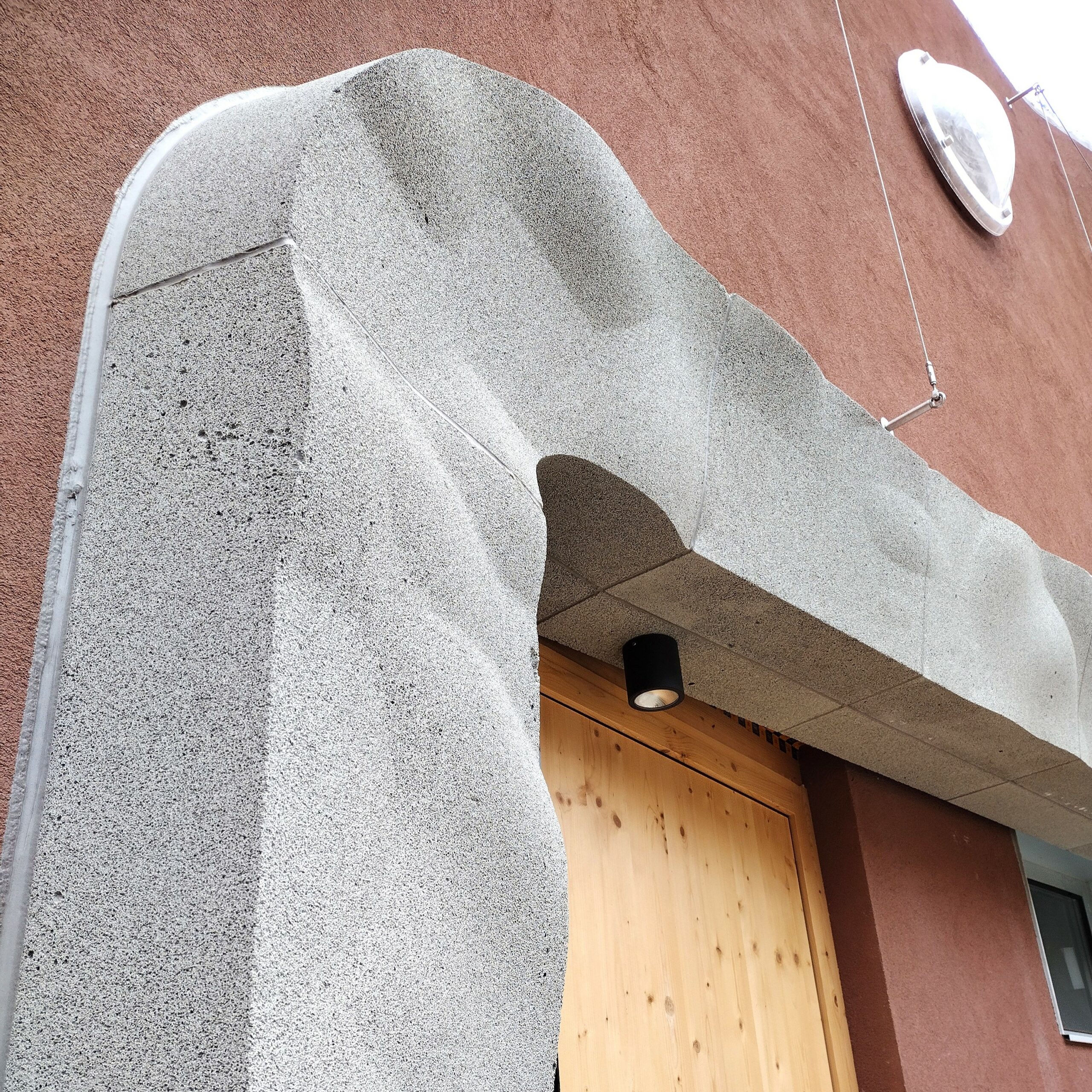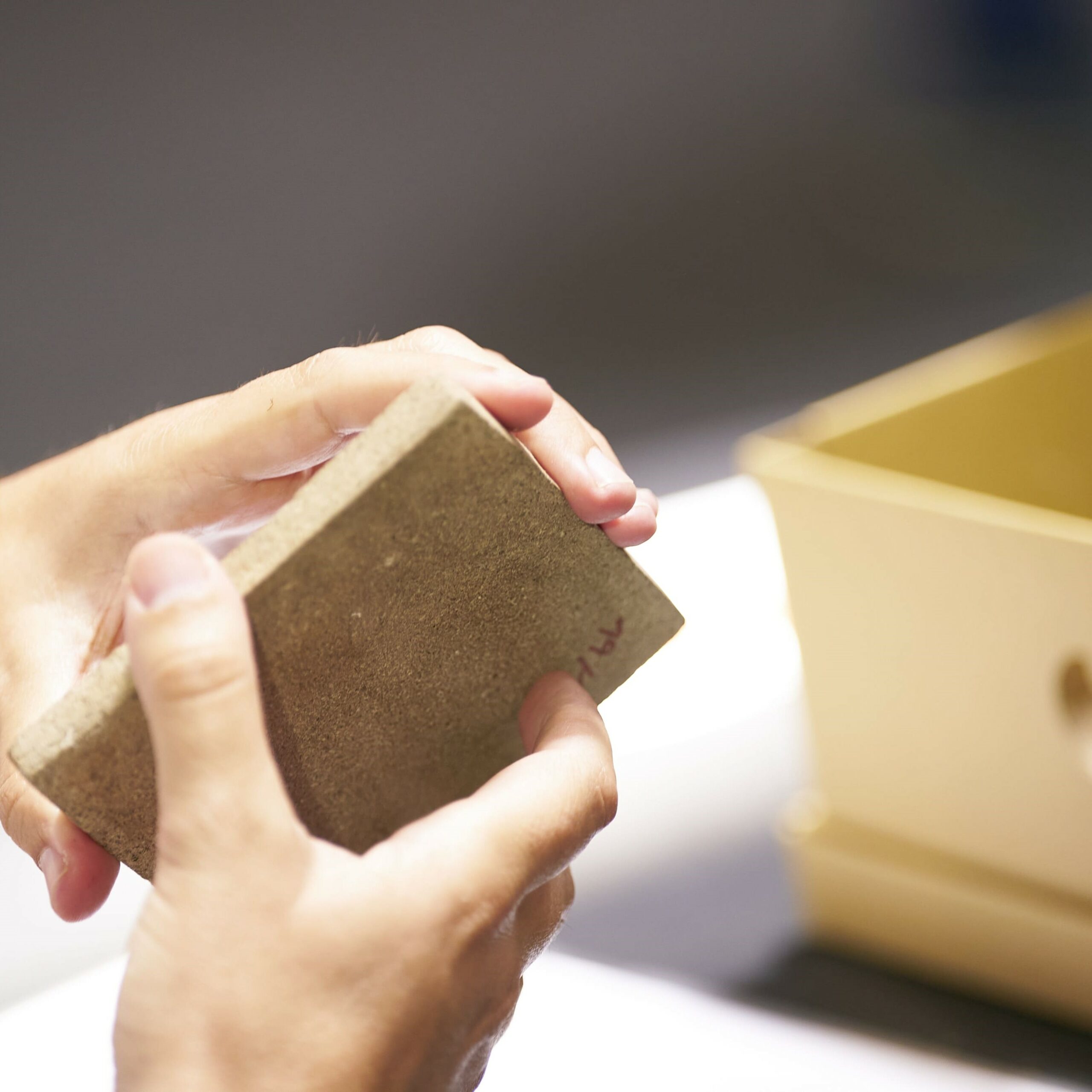Slope Bench with Escofet
Organic and modular precast concrete bench
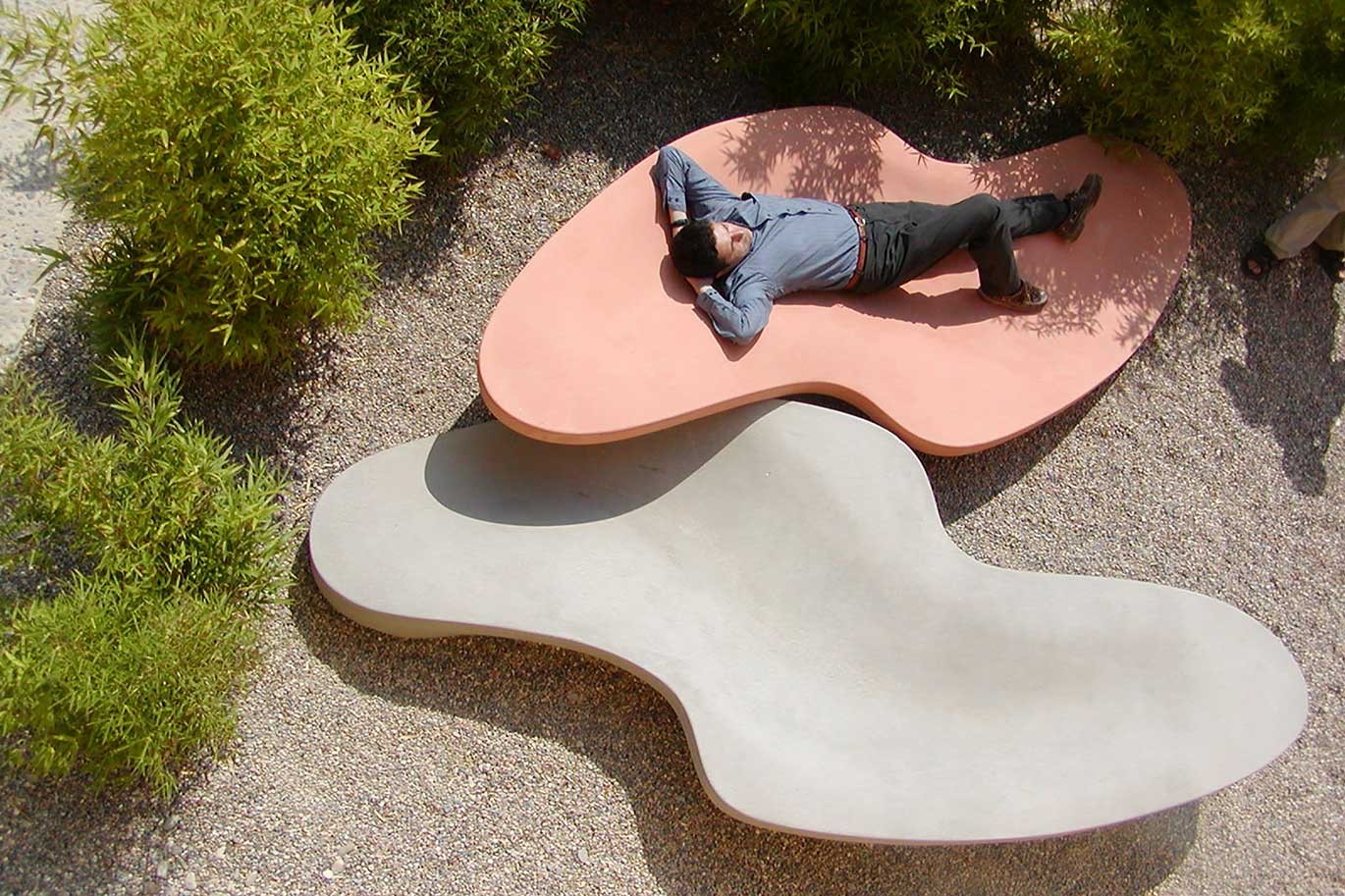
Project details
Year: 2000
Firm role: Development of modular form of the precast concrete bench
Category: Collaboration with industry
SLOPE is a transition or infiltration piece that allows us to evoke the natural within the urban context, as well as dissolve the urban into the natural. The piece has its own logic, both isolated and in aggregation. The Slope bench results from in-depth knowledge of the manufacturing techniques of prefabricated concrete elements, applied to materialize a proposal inspired by nature.
This piece of molded concrete allows the reproduction of nature within the urban environment, inviting the user to rest and contemplate through its organic morphology.
An important part of the design of the piece was a careful study of the reptiles’ tissues to understand how their scales are added and how their structure is transformed in the transition where movement is necessary. To make the resulting shape, a mold reinforced with stainless steel is proposed. Its polished-like finish is achieved with gentle pickling. The piece has a weight of 1500 kg, which allows it to be located in parks or building roofs without the need for anchoring or other type of intervention on the base.
The Slope bench takes into account ergonomics, as well as aesthetics, so that it constitutes an attractive and comfortable landscape element. You can place a single piece, or, thanks to its modular shape, create varied compositions.
The production process of the piece was quite complex, based on physical models produced computerically, on which we acted to be able to scan and produce the model at a 1:1 scale. To do this, we have the help of professional modellers for automobile bodies.
The authors say: “Surely one of the vital characteristics of our contemporary society is the search for a new relationship with the natural; “new guidelines, new systems and also new forms, that make us perceive the action of progress in tune with the natural context that surrounds us, allowing us to integrate it and be integrated into it.”
